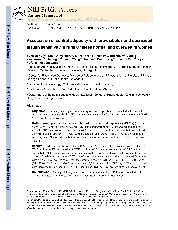摘要
This study investigated whether high central adiposity was associated with prediabetes and decreased insulin sensitivity (IS) in both normal-weight (body mass index [BMI] <23 kg/m(2)) and overweight (BMI >= 23 kg/m(2)) rural Chinese women. Adipose variables measured by dual-energy x-ray absorptiometry (percentage body fat, percentage lower-body fat [%LF], and percentage trunk fat [%TF]) and general adipose variables (BMI and waist circumference) were used for examining the association of adiposity with prediabetes among 4071 rural Chinese women aged 20 to 60 years. Furthermore, the association of adiposity with IS was tested in both normal- and overweight women with normal glucose tolerance. BMI was highly correlated with percentage body fat and waist circumference, but was weakly correlated with %LF and %TF. Both high %TF (top quartile of %TF) and low %LF (lower 3 quartiles of %LF) were associated with higher prevalence of prediabetes in both normal- and overweight women. Compared with normal-weight women in low %TF, the odds of prediabetes were similarly increased for women with high %TF regardless of whether they were overweight (odds ratio [95% confidence interval] = 1.6 [1.3-2.0]) or not (odds ratio [95% confidence interval] = 1.5 [1.2-2.0]). Similarly, among 3280 women with normal glucose tolerance, high %TF was associated with increased fasting insulin, 2-hour oral glucose tolerance test insulin, and homeostasis model assessment of insulin resistance regardless of weight status (normal or overweight). Among relatively lean, rural Chinese women, high %TF was associated with increased odds of prediabetes and lower IS regardless of weight status (normal or overweight).
